


Click through the tabs below to learn more about some of the significant figures from shogunate Japan.
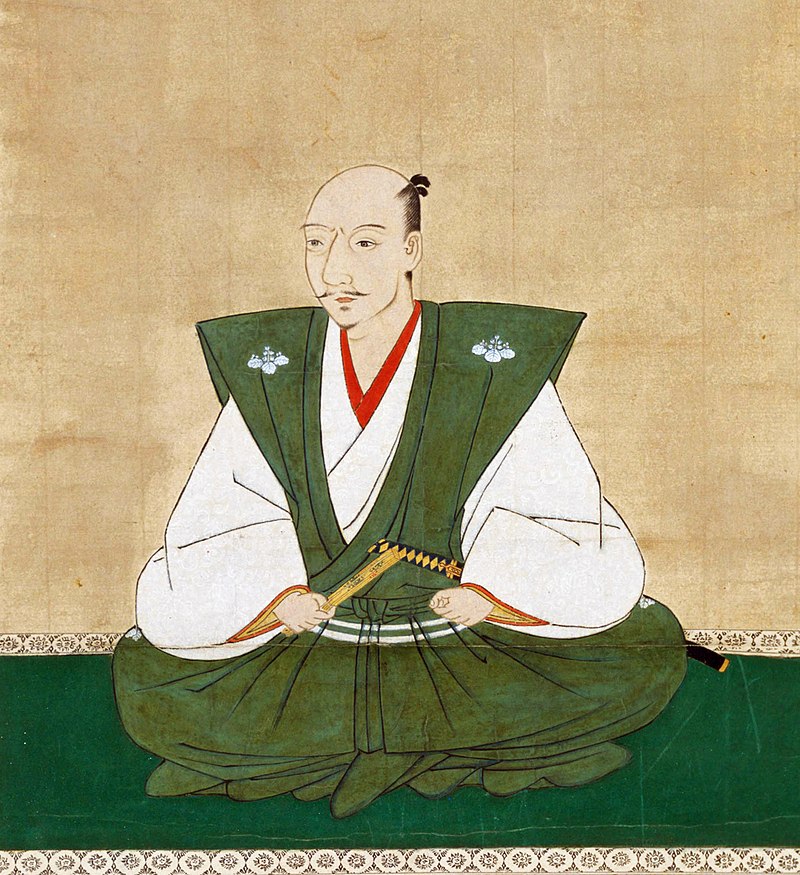
Oda Nobunaga was the foremost military leader of Japan from 1568 to 1582. Nobunaga, along with his two immediate successors, Toyotomi Hideyoshi (1537-1598) and Tokugawa Ieyasu (1543-1616), is credited with unifying medieval Japan in the second half of the 16th century. An innovative general who also used diplomacy as well as superior military tactics and weapons to see off his rivals, the warlord was infamous for his ruthless drive to conquer all before him. Read through the resources below to learn more about him.

Source: Ashikagashi no Rekishi (足利氏の歴史), Tochigi Prefectural Museum, 1991
Ashikaga Takauji (足利 尊氏, August 18, 1305 – June 7, 1358) was the founder and first shōgun of the Ashikaga shogunate. His rule began in 1338, beginning the Muromachi period of Japan, and ended with his death in 1358. He was a male-line descendant of the samurai of the (Minamoto) Seiwa Genji line (meaning they were descendants of Emperor Seiwa) who had settled in the Ashikaga area of Shimotsuke Province, in present-day Tochigi Prefecture. According to Zen master and intellectual Musō Soseki, who enjoyed his favor and collaborated with him, Takauji had three qualities. First, he kept his cool in battle and was not afraid of death. Second, he was merciful and tolerant. Third, he was very generous with those below him. Read through the resources below to learn more about him.
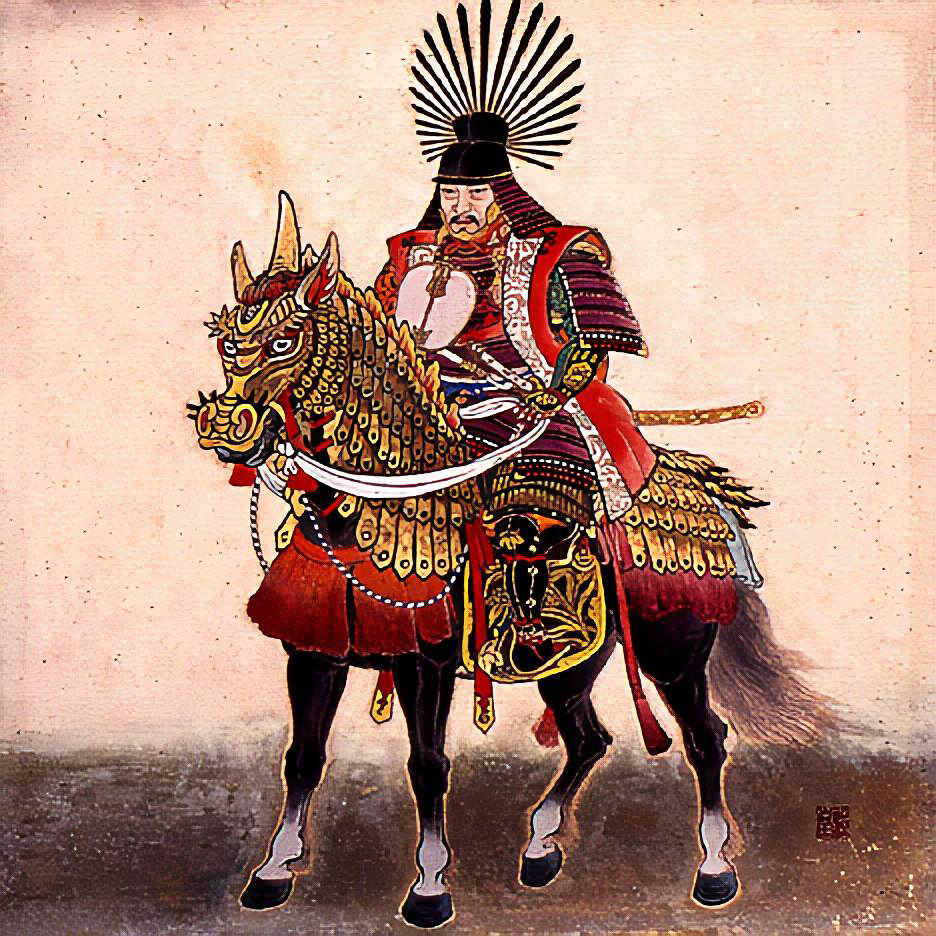
Source: Toyotomi Hideyoshi on his horse with his unique helmet
Toyotomi Hideyoshi (豊臣 秀吉, 17 March 1537 – 18 September 1598) was a Japanese samurai and daimyo (feudal lord) of the late Sengoku period regarded as the second "Great Unifier" of Japan. Hideyoshi's rule covers most of the Azuchi–Momoyama period of Japan, partially named after his castle, Momoyama Castle. Hideyoshi left an influential and lasting legacy in Japan, including Osaka Castle, the Tokugawa class system, the restriction on the possession of weapons to the samurai, and the construction and restoration of many temples some of which are still visible in Kyoto. Read through the resources below to learn more about him.
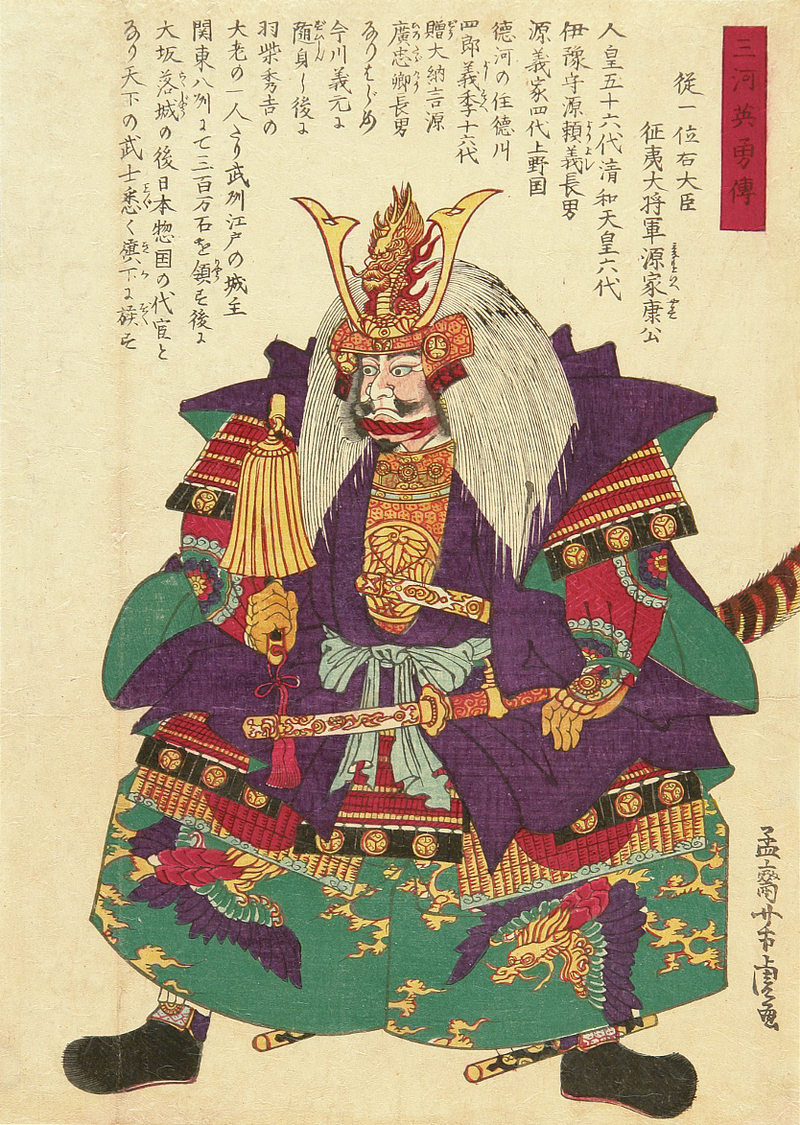
Source: "Mikawa Eiyu Den" (Heroes of Mikawa Province)
Tokugawa Ieyasu (徳川家康, January 31 [O.S. January 21], 1543 – June 1, 1616) (born Matsudaira Takechiyo) was the founder and first shōgun of the Tokugawa shogunate of Japan, which ruled Japan from 1603 until the Meiji Restoration in 1868. He was one of the three "Great Unifiers" of Japan, along with his former lord Oda Nobunaga and Toyotomi Hideyoshi. Read through the resources below to learn more.
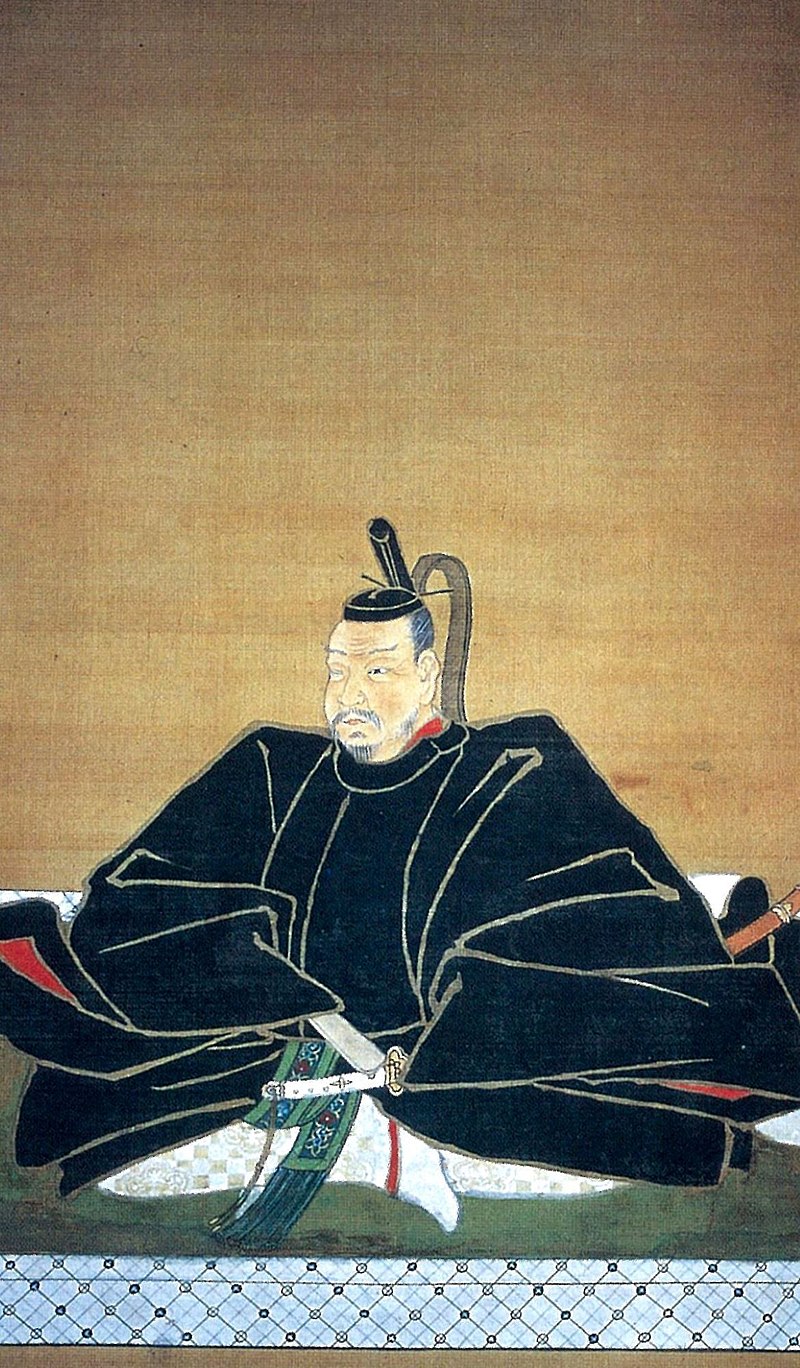
Source: Portrait of Date Masamune (1567-1636)
Date Masamune (伊達 政宗, September 5, 1567 – June 27, 1636) was a regional ruler of Japan's Azuchi–Momoyama period through early Edo period. Heir to a long line of powerful daimyō in the Tōhoku region, he went on to found the modern-day city of Sendai. An outstanding tactician, he was made all the more iconic for his missing eye, as Masamune was often called dokuganryū (独眼竜), or the "One-Eyed Dragon of Ōshu".
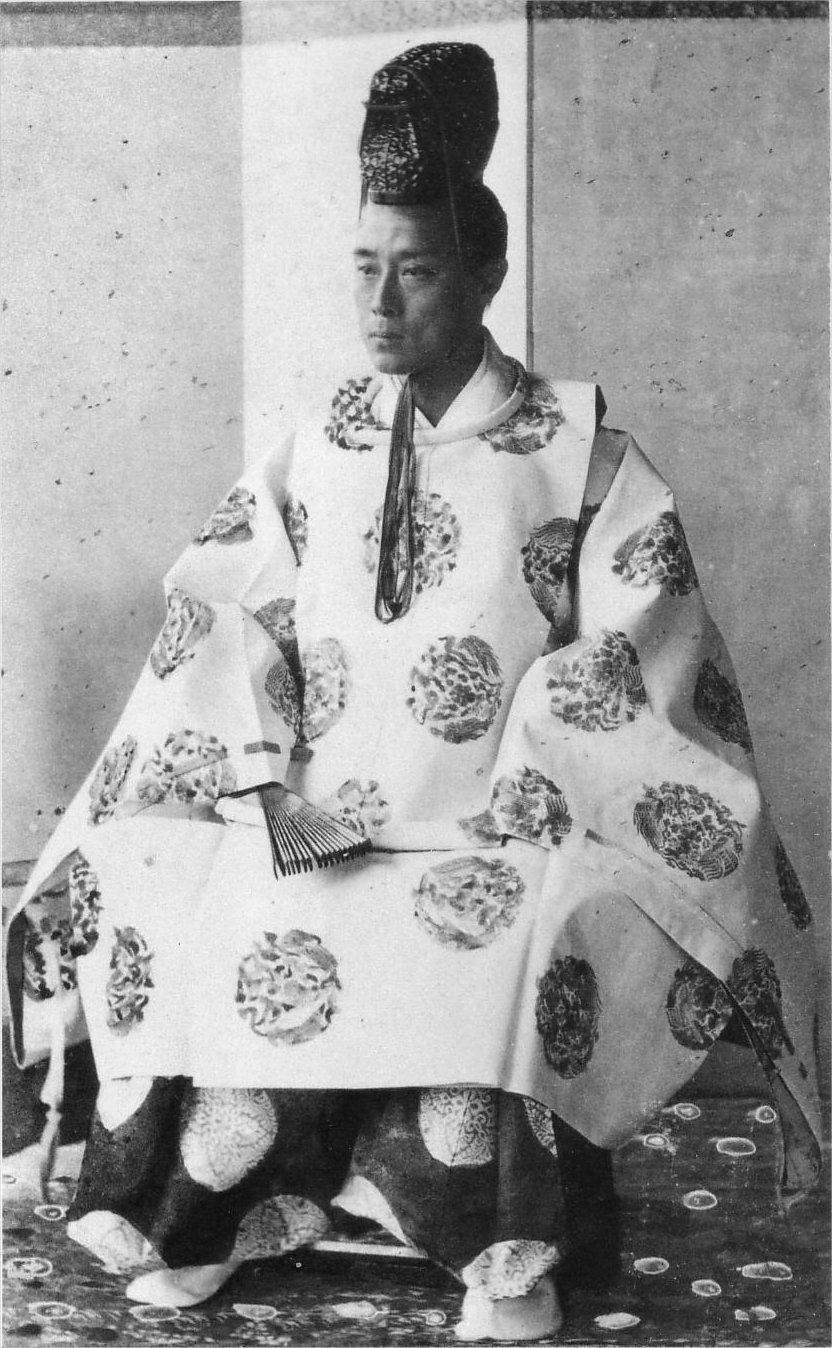
Prince Tokugawa Yoshinobu was the 15th and last shōgun of the Tokugawa shogunate of Japan. He was part of a movement which aimed to reform the ageing shogunate, but was ultimately unsuccessful. After resigning in late 1867, he went into retirement, and largely avoided the public eye for the rest of his life.
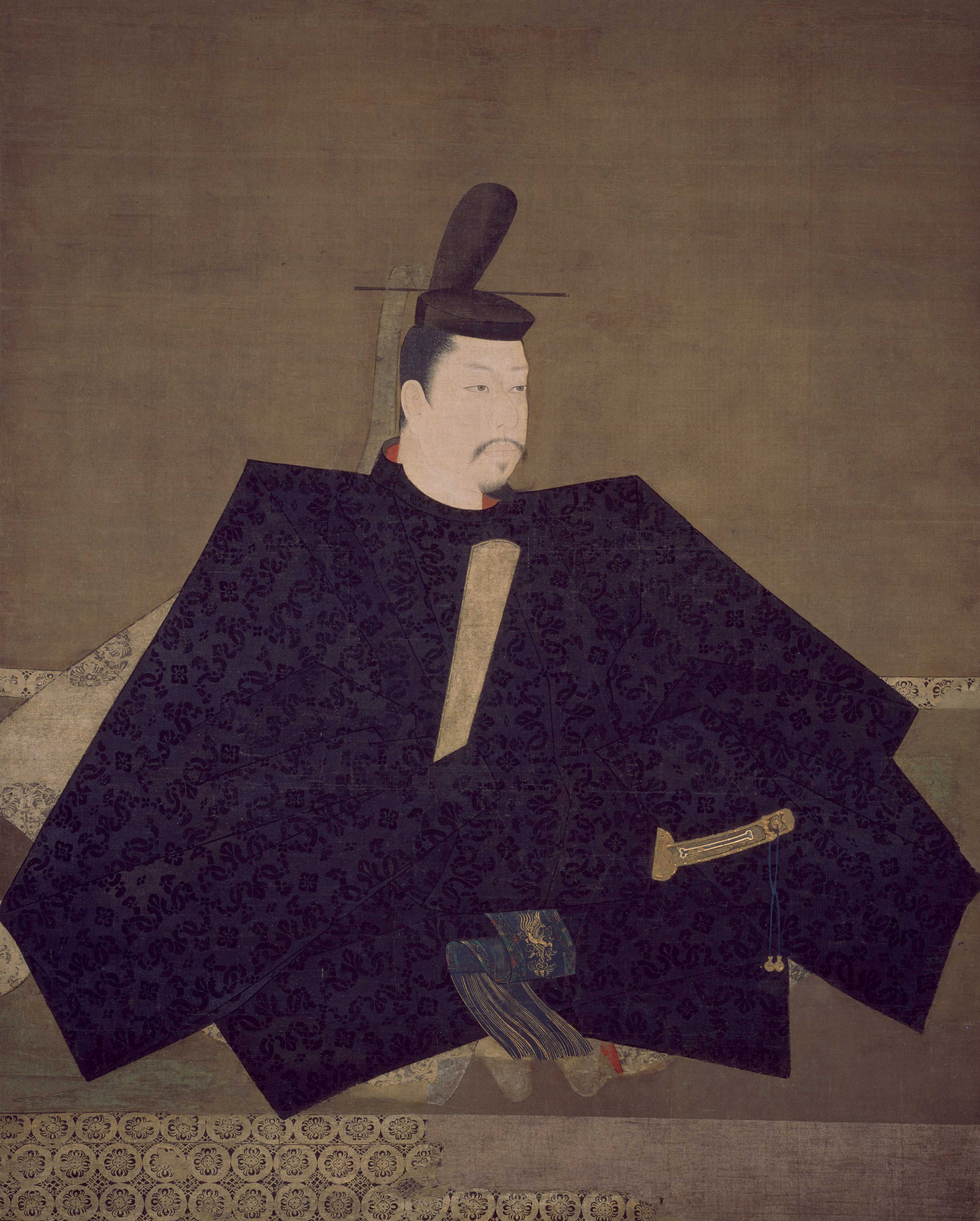
Source: Portrait of Yoritomo, Hanging scroll; color on silk
Minamoto no Yoritomo (源 頼朝, May 9, 1147 – February 9, 1199) was the founder and the first shogun of the Kamakura shogunate of Japan, ruling from 1192 until 1199. He was the husband of Hōjō Masako who acted as regent (shikken) after his death. Yoritomo was the son of Minamoto no Yoshitomo and belonged to Seiwa Genji's prestigious Kawachi Genji family. After setting himself the rightful heir of the Minamoto clan, he led his clan against the Taira clan from his capital in Kamakura, beginning the Genpei War in 1180. After five years of war, he finally defeated the Taira clan in the Battle of Dan-no-ura in 1185. Yoritomo thus established the supremacy of the warrior samurai caste and the first bakufu (shogunate) at Kamakura, beginning the feudal age in Japan which lasted until the mid-19th century.

Source: Exhibition of the Treasures and Papers of the Tokugawa Shogunal Household

Hōjō Masako was a Japanese regent who significantly strengthened the rule of the Kamakura Shōgunate, the warrior government of medieval Japan, which had been established by her husband Minamoto no Yoritomo. Read through the resources below to learn more.
